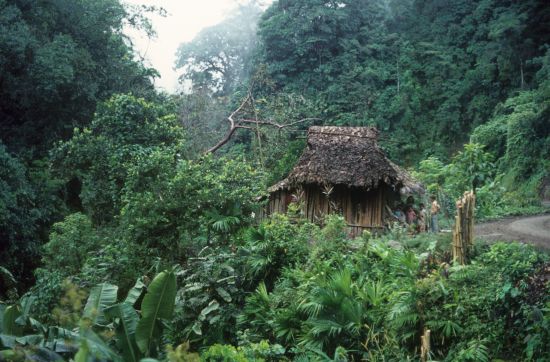| Barelds - Cycling around the world - Cycle stories - Asia, Africa, Europe, America | ||||||||||||||||||||
| home | site map | world | children | recent | cooking | dutch | german | react | ||||||||||||
South-America (2).
C
ycling was not so successful in Brazil. That was not because of the bicycles, in Cape Town they were completely cleaned and new parts were mounted, after which they were unloaded from the airplane in Rio in a prime condition.It was not easy to leave the metropolis via an 8-lane highway, with the same number of lines with raving and hooting cars, even though the names were so romantic: Copacabana, Ipanera. Almost a day we roamed through the slums and flats areas with an inaccurate map searching for smaller roads. "Não é bom !" said the papaya farmer, while he slurped his coffee from his bowl. He dipped his roll in it, and shook his head. We sat with him at the morning coffee, after having passed the night hospitably.

Uruguay: for cyclists a fantastic car fleet; T-Fords, which could drive at a maximum speed of just 40 km (25 miles)/hour.
Dim and gloom from the freight lorries and stanching exhaust gases. A police car pushed us off the road. A policeman came out and began to shout at us. "No comprende" we said in Spanish, but we understood that much that he didn't believe us.
"We are Dutch people on a trip through South-America". And that, they didn't believe at all. His colleague took the bicycle pump from our bicycle, laid it on his knee, as if he wanted to break it in two and finally, after a lot of shouting and threats we were banned to the road sides of the roads, full of stones and holes. Cycling through Brazil, for us meant: looking back whether the police is coming because we were in no need for countless punctures. Officially, as we heard later, you are not allowed to cycle on provincial roads, you may on state roads but those were the very crowded motorways and also on the town roads, but those were almost never thoroughfares.
We also were in the wrong season: August, in those regions that was the winter- and rainy season. This meant half days sheltering in sheds, under our ground cloth or under the flysheet. On a misty Sunday afternoon - so drab and grey that you could imagine that you were in the Netherlands, we cycled through a desolate part and could not camp and we were forced to make a miles long, winding, decent to Santos. An extremely narrow road, and beside us, ascending, an uninterrupted line of cars returning from a Sunday outing, back to São Paulo. Puncture!

Colombia: In the North dense tropical forests and now and then a Samuel hut of a family consisting of 16 persons.
I
n a friendly afternoon sun we entered Jagarão, bumping over the cobblestones. Church and houses situated on the central square in sugar cake style, and decorated with white frills, typical for the whole of South-America, we learned after a while. We had reached the border of Brazil and Uruguay and cycled across the bridge into Uruguay. Sunday again, but no problem, the customs officer stamped our passports at his home. The bank was closed: we entered the country with fl 1,50 in Uruguay's pesos - exchanged for the remaining Brazilian money - and for 1½ day food in our panniers. Enough to reach Treinta-y-Tres, we hoped.
| Start World around | South-America | << Previous | Next page >> | |||
| Barelds on bicycle through the world - Cycling in Asia, Europe, Africa, America | ||||||